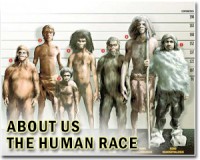| . |  |
. |
Belfast, Ireland (SPX) Feb 16, 2010 Researchers at Queen's University have helped produce a new archaeological tool which could answer key questions in human evolution. The new calibration curve, which extends back 50,000 years is a major landmark in radiocarbon dating-- the method used by archaeologists and geoscientists to establish the age of carbon-based materials. It could help research issues including the effect of climate change on human adaption and migrations. The project was led by Queen's University Belfast through a National Environment Research Centre (NERC) funded research grant to Dr Paula Reimer and Professor Gerry McCormac from the Centre for Climate, the Environment and Chronology (14CHRONO) at Queen's and statisticians at the University of Sheffield. Ron Reimer and Professor Emeritus Mike Baillie from Queen's School of Geography, Archaeology and Palaeoecology also contributed to the work. The curve called INTCAL09, has just been published in the journal Radiocarbon. It not only extends radiocarbon calibration but also considerably improves earlier parts of the curve. Dr Reimer said: "The new radiocarbon calibration curve will be used worldwide by archaeologists and earth scientists to convert radiocarbon ages into a meaningful time scale comparable to historical dates or other estimates of calendar age. "It is significant because this agreed calibration curve now extends over the entire normal range of radiocarbon dating, up to 50,000 years before today. Comparisons of the new curve to ice-core or other climate archives will provide information about changes in solar activity and ocean circulation." It has taken nearly 30 years for researchers to produce a calibration curve this far back in time. Since the early 1980s, an international working group called INTCAL has been working on the project. The principle of radiocarbon dating is that plants and animals absorb trace amounts of radioactive carbon-14 from carbon dioxide in the atmosphere while they are alive but stop doing so when they die. The carbon-14 decays from archaeological and geological samples so the amount left in the sample gives an indication of how old the sample is. As the amount of carbon -14 in the atmosphere is not constant, but varies with the strength of the earth's magnetic field, solar activity and ocean radiocarbon ages must be corrected with a calibration curve. Most experts consider the technical limit of radiocarbon dating to be about 50,000 years, after which there is too little carbon-14 left to measure accurately with present day technology.
Share This Article With Planet Earth
Related Links Queen's University Belfast All About Human Beings and How We Got To Be Here
 Suspended animation coming to life: researcher
Suspended animation coming to life: researcherLong Beach, California (AFP) Feb 13, 2010 A gas proven deadly in chemical weapons could one day be used to put people into life-saving suspended animation. While hydrogen sulfide is toxic in large doses, small amounts of the gas have the potential to make animals appear dead for a while then allow them to wake up unharmed, according to biochemist Mark Roth. "I think we are on the path of understanding metabolic flexibility in a ... read more |
|
| The content herein, unless otherwise known to be public domain, are Copyright 1995-2010 - SpaceDaily. AFP and UPI Wire Stories are copyright Agence France-Presse and United Press International. ESA Portal Reports are copyright European Space Agency. All NASA sourced material is public domain. Additional copyrights may apply in whole or part to other bona fide parties. Advertising does not imply endorsement,agreement or approval of any opinions, statements or information provided by SpaceDaily on any Web page published or hosted by SpaceDaily. Privacy Statement |